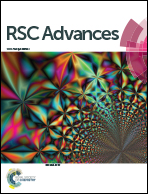Reduced use of glucose by normoxic cow's mammary gland under acute inflammation: an example of homeostatic aerobic glycolysis
Abstract
The concentrations of glucose and glucose-derived carbons in milk reflect their concentrations in the mammary epithelial cell cytosol. We hypothesized that the sharp reduction in milk secretion observed during acute inflammation in the mammary gland is associated with conversion of the gland's metabolism to aerobic glycolysis and reduced extraction of glucose from the blood, in support to the innate immune system. Acute inflammation was induced by challenging one mammary gland in 5 cows with a single dose of 10 μg bacterial lipopolysaccharide. The glandular response was followed up to 96 h post-challenge. The challenge induced increases in polymorphonuclear leukocytes, milk malondialdehyde concentration and casein degradation. The response peaked at 24 h post-challenge and the inflammation began to decrease after 48 h, but at 96 h post-treatment, values had not yet returned to pre-treatment levels. Milk secretion, and milk lactose, glucose and citrate concentrations decreased sharply, reaching minimal levels at 24 h post-treatment. The correlations between these parameters and inflammation parameters were negative and statistically significant. The reduction of ∼50% in milk yield and lactose concentration in the treated gland indicated that extraction of glucose from the blood was reduced from a rate of ∼740 g d−1 to 190 g d−1 (i.e., by 550 g d−1) at the peak of response. The concentrations of glucose-6-phosphate, malate, oxaloacetate, lactate and pyruvate and the activities of the enzymes glucose-6-phosphate dehydrogenase, malate dehydrogenase and lactate dehydrogenase increased and, in general, were positively and significantly correlated to inflammation parameters. It was concluded that inflammation shifts the passage of glucose-derived carbons to the pentose phosphate pathway and shifts cell metabolism to glycolysis at the expense of mitochondrial activity.



 Please wait while we load your content...
Please wait while we load your content...